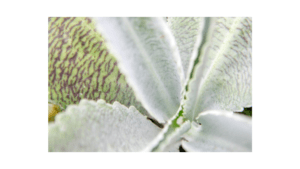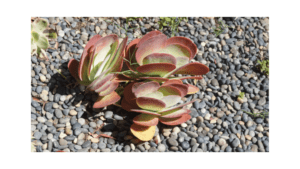Kalanchoe
The Kalanchoe genus (Syn. Bryophyllum) belongs to the family Crassulaceae native to Madagascar. It is comprised of 125 species of succulent flowering plants. This genus is known for its medicinally important plants thus used in several traditional medicines (1). Largely used for the treatment of kidney stones, gastric ulcers, pulmonary infections, and rheumatoid arthritis (2).
Botanical description
This genus belongs to the family Crassulaceae and consists of mainly succulent herbs. The main characteristic of the Kalanchoe genus is its xeromorphic structure, the occurrence of water storage tissue in the leaf and stem (3)
Leaf: Usually centric or intermediate between dorsiventral and centric. Hairs are bladder-like epidermal in origin and sometimes secrete mucilage. Leaves are thick and fleshy.
Stem: Fleshy and have a thick layer of wax to reduce the water loss.
Root: Red root tip having anthocyanin pigment.
Flower: Bisexual and arranged in cymose inflorescence at the end of leaf shoots.
Following are the plants included under the Kalanchoe genus that are mainly known for their beautiful aesthetic looks and for their medicinal properties.
1. Kalanchoe pinnata

Other names of these plants are Bryophyllum calycinum or pinnata, Crassula pinnata. Common names are Life Plant, Mother of Thousands, and Miracle Leaf. Largely used for the treatment of kidney stones, gastric ulcers, pulmonary infections, and rheumatoid arthritis (2).
It is a shrub in nature and reaches up to 180 cm. Leaves are smooth and glossy with a fleshy appearance. Preferred well-drained soil and propagate by stem cutting or leaf plantlets. Thus are easy to grow and propagate. The plant is toxic in nature (7).
2. Kalanchoe gastonis-bonnieri

The common name of this plant is donkey ears, life plant, palm beachbells, leaf of life, miracle leaf, and giant kalanchoe (4). this plant is used in folk medicine for the treatment of genitourinary infections and is also used as a vaginal contraceptive (5).
It has large grey-green leaves having brown markings. easy to grow and maintain can reach a height of 45 cm. dies after flowering. Propagation is via leaf as little plantlets arise on the tip of the leaves. These small plantlets have a root system and thus are very easy to detach and propagate further.
Kalanchoe gastonis-bonnieri requires good indirect sunlight and almost no or little humidity. water the plants only when the soil drys out as it does not survive well under moist conditions. Soil requirement is generally coarse sandy. This plant is toxic in nature.
3. Kalanchoe luciae

This plant is commonly known as the Paddle plant or Flapjack as it has a paddle-shaped leaf. It reaches a height of around 20 cm. The plant needs full sunlight and less water as this is succulent in nature. Therefore the maintenance is relatively low. in the summer season, you can give half-strength fertilizer to make it more healthy. the propagation is via offsets and it needs to be taken care of against aphids and mealybugs (6).
